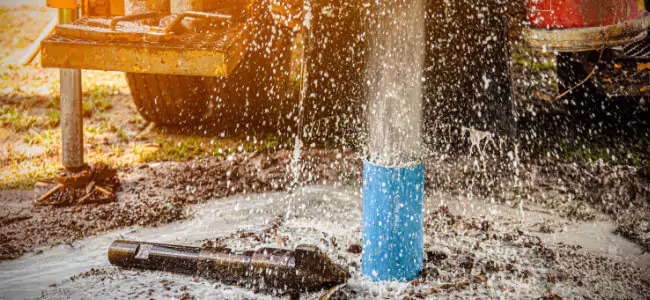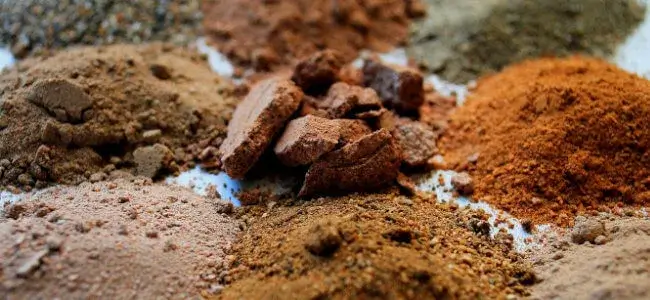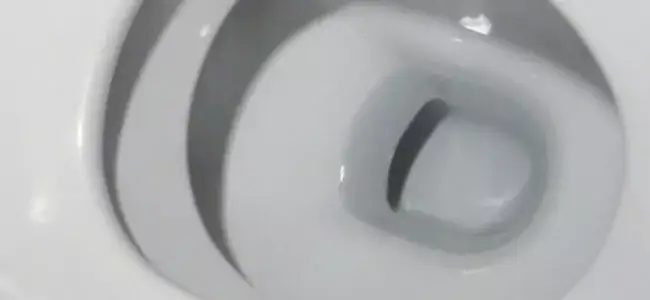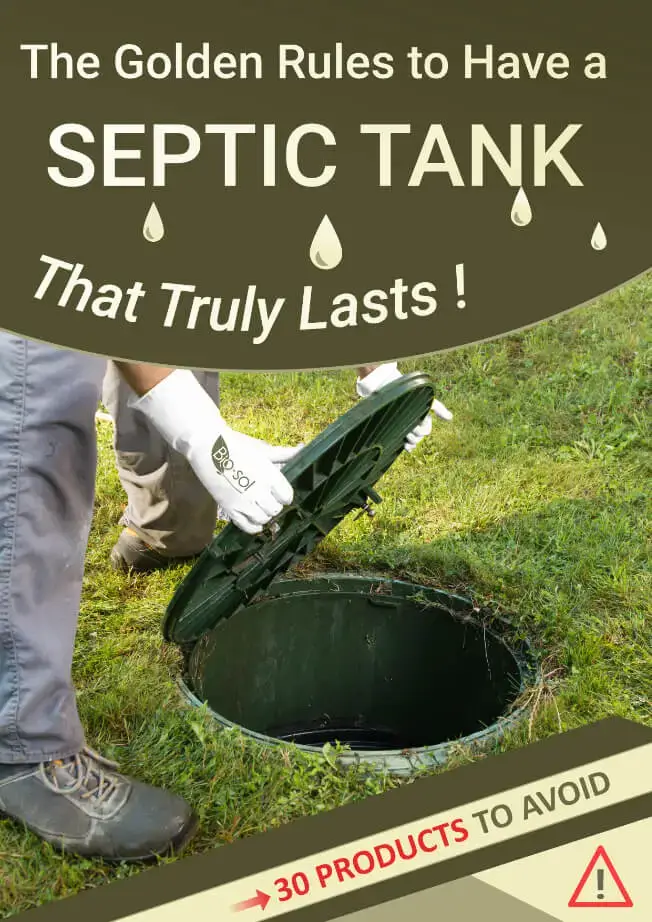The must-know tips on how to maintain a flowing artesian well

TABLE OF CONTENTS
An artesian well is a water well that has enough pressure to automatically push the water to the surface of the ground. Artesian groundwater is not that different from other groundwater – the only difference is that artesian groundwater is forced to the ground through pressure, unlike other wells that rely on artificial pumps. An artesian well is typically drilled into an aquifer and the pressure in the aquifer is what forces the water to flow. This pressure can cause the water to flow continuously which results in a flowing artesian well.
Artesian well FAQs
Is water from artesian wells safe?
Generally speaking, water from artesian wells is of excellent quality. However, the quality of the water may vary depending on the depth of the well. Wells that rely on water from the bedrock formation like deep sandstone formations might have arsenic concentrations which might be a health hazard. It is recommended to close any artesian well that has poor quality water. Closing an artesian well is a job for qualified well drillers. The driller should close the well in a manner that ensures there are no leakages to the surface of the ground.
What should you do before drilling a flowing artesian well?
Before an artesian well is drilled, the well driller should do a pre-drilling assessment of the area. the main goal of this assessment is to determine the pressure that might be discovered upon drilling the well. This will help to predetermine if artesian conditions exist. This assessment will start with the collection of various geological details like static water levels, a history of flowing artesian wells around the area, etc. The driller will typically access this information from various reports and other reliable resources like the Water Resource Atlas. They might also get data from the Ministry of Environment or reviewing any local construction reports.
If the information is not readily available, the driller can use other techniques to examine the area. For instance, geophysical logs or electric surveys can be done in order to give them a better understanding of the subsurface conditions. In situations where knowledge is limited, it is advisable to assume that artesian conditions will be realized so the necessary precautionary measures should be in place.
Should you control the flow rate of the artesian well?
If the water flow in the artesian well is left uncontrolled, a lot of groundwater will go to waste. For example, a flowing artesian well that flows at that the rate of 10 USgpm ends up wasting 14,400 gallons daily which translates to 5.25 million gallons annually. As more groundwater is wasted, the confining pressure reduces and eventually, the artesian well might stop flowing or flow at reduced pressures. The breakout of the artesian well should also be promptly contained to prevent silt, gravel, clay, drilling fluids, and sand being carried with the groundwater to the surface water. This can compromise the quality of the water that reaches the ground surface. A flowing artesian well can also cause soil erosion on the ground.
The regulatory framework for controlling the flow of artesian wells can be found in the water act. If artesian conditions are realized in the drilling of a well, the well driller is obligated to ensure the flow is either stopped or controlled and then advise the owner of the land accordingly. The landowner should also be advised of the adverse effects of not controlling the flow of the artesian well. To avoid any conflicts, the driller should agree with the landowner on such issues before the drilling commences. A flowing artesian well should have a cap that is securely attached. The cap helps to prevent vermin and other contaminants from entering the well and it also helps to prevent the flow from escaping the well.
Does controlling the flow of an artesian well dry it?
As long as the artesian well has been properly constructed, controlling its flow should not dry it up. On the contrary, not controlling the flow of the water is what can cause the well to dry. The purpose of controlling the flow of the artesian well is to reduce the wastage of groundwater from the aquifer which will help to ensure the longevity of your well.
Disinfecting a flowing artesian well
The process of chlorination can be used to clear your well of coliform bacteria as well as other harmful microbes that might be in the water. These microbes can make the water to have an unpleasant taste or even result in disease. The following are some of the conditions that may necessitate the disinfection of your well.
- If you do a water test and the test reveals the presence of coliform bacteria
- If flood or surface water gets into your well
- If you have drilled a new well and hooked it to your plumbing system
- After the replacement or repair of your well pump
- After you have made some repairs or changes to your well
- As part of your annual routine maintenance which should also include treatment for Sulphur bacteria
How to disinfect your flowing artesian well
You may use regular household bleach to disinfect your well. Bleach has chlorine which will kill the harmful bacteria. However, check the label of your bleach to ensure it does not have any additives (e.g. scent or detergent). Use the following procedure to do complete chlorination.
- Pump approximately 300-500 gallons of water into a clean water storage tank near your well.
- Pour 2.5 gallons of bleach into the water storage tank
- Open the well by removing the cap
- Mix another 2.5 gallons of bleach in 4 gallons of water and pour it into the well. You can use a funnel to control the flow of the mixture.
- Rinse the inside of your well casing for 10-15 minutes as soon as you finish pouring the bleach into the well. The hose you use for this should be connected to the water source you are disinfecting.
- Let it rest for approximately one hour to allow the chlorine to mix well with the water in the well
- Slowly siphon the 300-500 gallon water back into the well. Regulate the flow to ensure the bleach mixture does not spill over the casing onto the ground
- Replace the well cap and tighten it
- Open your faucets and flush the toilets one at a time. This will help to circulate the chlorine in the home plumbing system
- Shut the tops and avoid flushing the toilets for another 12-24 hours to allow the chlorine to destroy any bacteria that might be in the home plumbing system
Flushing the well after a full chlorination
After 12-24 hours, you will need to flush the chlorine out of your well. Follow the steps below to flush your well
- Use a garden hose that is connected to the water supply and run water through the hose until you can no longer smell the chlorine in the water.
- Direct chlorinated water from the well into an area away from the shrubbery and grass to avoid its damage. Chlorine can kill fish and other aquatic species so do not drain it off into a lake, river or any large water body.
CAUTION: do not direct the chlorinated water into the septic tank because the chlorine will kill bacteria that your septic tank relies on to digest organic waste.
- Flush your plumbing system by running the faucets and flushing all the toilets until the chlorine smell can no longer be detected.
- Reconnect any water treatment devices
What to do after disinfecting your well
You should expect your water to change in appearance after the disinfection but this visible change is only temporary. The water might look darker than it usually is and you may also experience more sediment or staining. The discoloration of water usually happens due to the oxidation of iron or manganese that might be in the water. It shouldn’t bother you though, because it will clear within a couple of days.
Do not start drinking the well water again before retesting it. A lab test should confirm whether your chlorination eliminated the bacteria or not. This test should be done a week after the chlorination exercise. If the test confirms that your water is now free from coliform bacteria, you can continue drinking from the well. However, it is a good idea to test the water again after a month just to be on the safe side. If the test reveals the presence of bacteria even after the chlorination, it might mean that you have a bigger problem at hand. It is highly likely that you are dealing with a contamination problem that is resulting from a poor well location. In such a case, chlorination will only be a temporary fix. You may want to contact a skilled plumber for help in troubleshooting the source of the contamination.
Septic systems and groundwater contamination
A failed septic system can result in the contamination of groundwater. In an ideal case, the septic system should efficiently digest the organic waste in the septic tank and then pass over the liquefied waste to the drain field for further processing. By the time the water is seeping back into the ground, the microbes will have been removed. However, if the septic system fails, the wastewater might be released from the system before it is properly purified. This is why septic system owners are advised to take good care of their septic systems to reduce the chances of it failing. Here are some simple steps you can take to ensure your septic system doesn’t fail on you.
- Start by reading our free eBook on the products you should avoid sending down the drain. You can download the free eBook here.
- Use the dye tracer tablets to diagnose the health of your system. You flush the tablets down your toilet and if the septic system has failed, you will see a greenish color forming on the ground just above your leach field in a day or two.
- If your septic system has failed, use a shock treatment product that works by introducing billions of bacteria and enzymes to your system. These microbes start digesting the organic waste and in no time, every clog will have cleared up.
- Regularly add biological additives to rejuvenate the bacteria in your septic system. This will ensure that your system is always efficient.
- These steps are very important because they will help to ensure your groundwater does not get contaminated from a failed septic system.
Conclusion
With proper care and maintenance, artesian flowing wells will serve your household for years on end. However, neglecting them will either result in contamination or drying of the well. You should, therefore, be very deliberate about proper care and maintenance of your well. Treat your well well (pun intended) and it will serve you well.
OUR LATEST BLOG POSTS

Strange facts about septic systems
If you are a septic system owner, you might have heard all manner of myths. For instance, there is a common myth that throwing a dead cat in the septic tank can help rejuvenate bacteria and thereby make the septic tank more effective. But is this even true? In this article, we will not only answer that […]

Soils types and their impact on septic systems
SOILS TYPES AND THEIR IMPACT ON SEPTIC SYSTEMS However good your septic system is, it depends on the right soil type to complete the process of purifying the wastewater from your home. The soil type in the drainfield area will determine how well the effluent is filtered and if the water that is sent back to the […]

Avoid flushing these if you have a septic tank
Most homeowners wrongfully assume that their toilet can serve as some sort of garbage disposal. As a result, they end up flushing all manner of things in the toilets. Some of the things that are flushed down the toilet are actually innocent mistakes because homeowners think that is the right way to dispose of the products while in other cases, it is just a don’t care attitude. Whichever the case may be, flushing some of these things can result in septic system failure and it could cost you a fortune. We have rounded up some of the commonly-flushed products that you should never flush if you have a septic system.
PERFECT! I WOULD NEED...
Discover which products are the best for your needs!You can contact us at 1-800-378-6132 (toll free) or click on the following button to access our free online evaluation.
GET A QUOTE ONLINELog in to your account
Whoops! It happens sometimes...
CREATE A NEW ACCOUNT
CONGRATS!
You are now registered and ready to go. You can add and change any of your information on your client profile.
Unfortunately, we do not ship our products to the USA at the moment.
But, if you live in the United States and would like to order them, please fill in the form below. You will then be notified as soon as they are available in your country.
Thank you for your understanding!
Malheureusement, nous n’expédions pas nos produits en France pour le moment.
Mais, si vous êtes résident français et aimeriez les commander, remplissez s’il vous plaît le formulaire ci-dessous. Nous pourrons ainsi vous aviser aussitôt qu’ils seront disponibles dans votre pays.
Merci de votre compréhension!

-
30 products to avoid
-
What to replace them with
-
And everything you should know about your septic system
DOWNLOAD THIS FREE EBOOK!
Which email address should we send it to?


